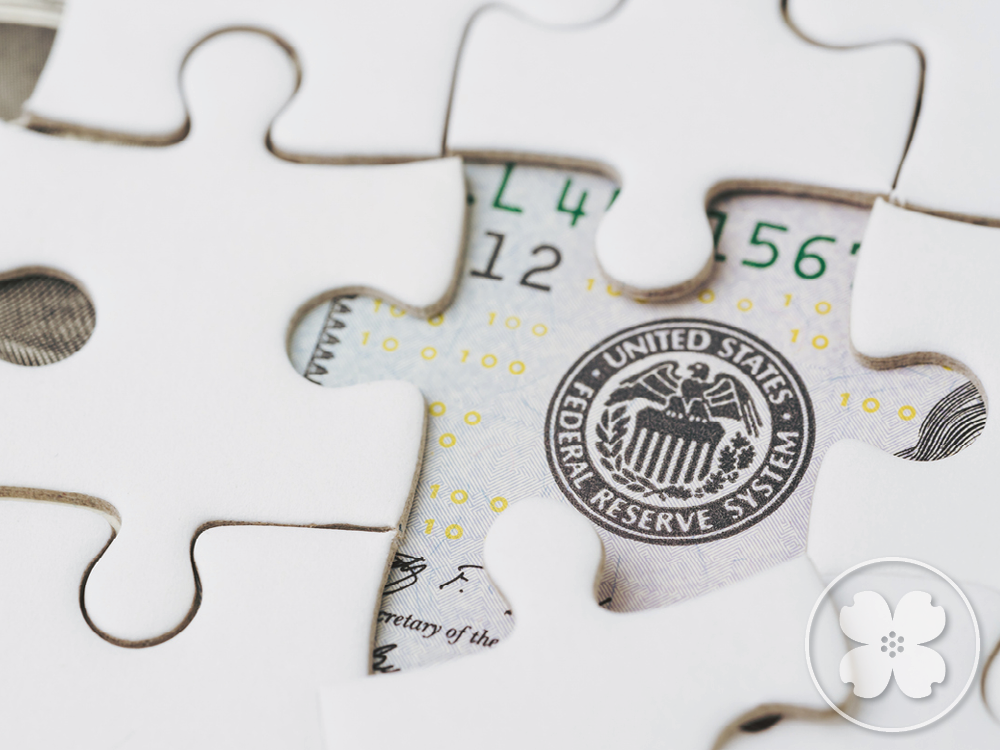November saw a decisive bullish rebound, with stocks, bonds, and precious metals surging despite economic uncertainty. Discover what fueled the comeback and what it means for investors.

By Matthew Suarez, AIFA®, CPFA® – Vice President & Portfolio Manager
The Federal Reserve, commonly referred to as the Fed, is the central bank of the United States. It was established in 1913 through the Federal Reserve Act in response to a series of financial panics that exposed the need for a more stable and flexible banking system. Today, the Fed plays a central role in shaping the macroeconomic environment through its monetary policy decisions.
It operates under dual mandate: to promote maximum employment and to maintain stable prices. These two objectives guide the Fed’s actions in both expanding and contracting phases of the economic cycle.
Interest Rates and Economic Influence
A key way the Federal Reserve influences the economy is through its control over short-term interest rates, particularly the federal funds rate—the overnight rate at which banks lend reserves to each other. By raising or lowering this benchmark rate, the Fed can either restrict or stimulate borrowing and investment.
For example, lowering the rate tends to reduce interest costs for consumer credit, business loans, and mortgages, encouraging spending and investment. Raising it, by contrast, generally slows economic activity to prevent overheating and to curb inflation.
Ripple Effects Across the Economy
These shifts in monetary policy don’t operate in a vacuum, their effects ripple outward:
- Consumers: Lower rates typically translate into cheaper car loans, lower credit card APRs, and more favorable mortgage terms. Homeowners with adjustable-rate mortgages often see a direct impact on their monthly payments. Conversely, rising interest rates can cool the housing market, tighten household budgets, and discourage discretionary spending.
- Businesses: A lower rate environment reduces the cost of capital, spurring expansion and hiring. But higher rates can compress profit margins and slow down capital investment.
- Investors: The federal funds rate has broad implications across asset classes. Equities often benefit when rates are low, as cheaper borrowing supports corporate earnings and stock buybacks. However, rate hikes can dampen enthusiasm in equity markets, especially for growth stocks whose valuations are more sensitive to the discounting of future cash flows.
Bonds, Currencies, and Inflation Dynamics
Bond markets respond inversely: as rates rise, bond prices fall. In a high-rate environment, newly issued bonds become more attractive, while older, lower-yielding bonds lose market value. Currency markets also react, with higher U.S. interest rates generally attracting capital inflows and strengthening the dollar relative to other currencies.
While rate cuts can effectively stimulate growth during downturns, they carry real risks when inflation remains stubbornly high. Cutting rates in this environment can fuel demand at a time when supply constraints or rising costs are already pressuring prices, potentially unanchoring inflation expectations.
Lessons from the Past, Challenges in the Present
If households and businesses begin acting as though high inflation will persist, by raising prices or demanding higher wages, the cycle can reinforce itself. History offers cautionary lessons: in the 1970s and early 1980s, premature rate cuts contributed to repeated inflationary spikes, forcing the Fed into painful tightening under Chairman Paul Volcker.
With services inflation and wage growth proving persistent in 2025, a premature pivot to lower rates could undermine hard-won progress on price stability.
The Fed’s Current Stance (Mid-2025)
As of mid-2025, the Federal Reserve has kept its target range for the federal funds rate between 4.25% and 4.50%. This posture reflects a balancing act: the economy remains resilient in terms of employment, but inflation has proven more persistent than anticipated.
The Fed has maintained a data-dependent approach, carefully weighing signals from the labor market, consumer price index (CPI), and wage growth indicators. The goal is to avoid either tipping the economy into recession with premature tightening or reigniting inflation through overly accommodative policy.
Why Independence Matters
The Federal Reserve’s ability to carry out this mission effectively hinges on its political independence. Although it reports to Congress and its leaders are appointed by the President and confirmed by the Senate, the Fed’s policy decisions are made independently.
This separation from political cycles allows the Fed to make unpopular but necessary choices—like raising rates before an election—to secure long-term economic health. History has shown that central banks subject to political interference often fail to control inflation, leading to economic instability.
Maintaining the Fed’s autonomy safeguards its credibility with investors and anchors expectations, which is a critical component of effective monetary policy.
Understanding the Fed’s Far-Reaching Role
In a world of complex global capital flows, technological disruption, and shifting labor dynamics, the Federal Reserve’s role remains indispensable. Its decisions at the short end of the yield curve have ramifications not just for financial markets, but for everyday life—from the affordability of a first home to the viability of a business loan.
The more one understands the nuances of monetary policy, the more one can appreciate the enormous influence this unelected institution exerts on the course of the U.S. economy.


